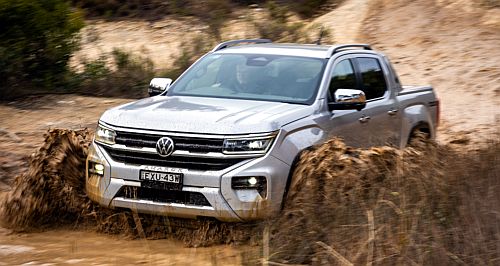News - Market Insight - Market Insight 2023Market Insight: Where our cars come fromDon’t cry for me Argentina: Politics, expediency and cost see nations such as Argentina lose car exports to Australia as Amarok production moves to South Africa. Chinese new-vehicle imports soar as manufacturers shift sourcing, buyer trends change28 Aug 2023 By NEIL DOWLING UNLESS you have been living under a rock for the past 12 months, you may have noticed that Chinese-made cars are starting to become increasingly common on Australian roads.
The data confirms it. In the first seven months of 2023, China exported 111,705 vehicles to Australia, almost doubling the number coming from that nation during the same period of 2022 with an increase of 97.6 per cent year on year.
Overall new-vehicle sales in Australia are up 9.0 per cent in the same period, which means some countries have seen their car exports to Australia dive, generally as parent OEMs change factory locations based on squeezing out the best production quantity and quality at the lowest possible cost.
Argentina was riding high a decade ago with the Amarok ute. Introduced in Australia in 2011, it was selling more than 8000 units for Volkswagen in 2014 to give a sturdy export market for the VW plant in Argentina.
Market forces affected all models through the pandemic, but the Amarok took a second hit with confirmed contamination during shipping which slowed deliveries. In 2022, quarantine data showed that more than half (2900 vehicles from a 4500 batch) failed to meet Australian quarantine rules and were delayed through cleaning processes.
Last year, that was further compounded by Volkswagen moving its production base from Argentina to South Africa as it joined with Ford in a joint exercise to produce its second-generation Amarok ute.
Sales in 2022 from Argentina slipped to 4514 for the year, about half its best year of 2015. Future vehicle imports from Argentina are cloudy.
Belgium was a focal point for European car manufacture thanks to welcome tax breaks, available property with factories and a well-positioned and well-equipped port.
In decades past, cars from brands including Mitsubishi, DAF (cars), Spyker, Volvo and GM-Opel were built or assembled in Belgium.
Now, only the Audi Q8 e-tron and Volvo XC40 Recharge are made there for the Australian market, although truck-maker DAF still has a plant in that county for components including axles and cabs.
Belgium made 8400 vehicles for Australia in 2013 and in 2022, made 1390 units. Its main loss was the Volvo XC60 and XC40 ranges, now with production moved to China (except the Recharge) under Volvo owner Geely’s umbrella.
India also made large numbers of vehicles for Australia as a manufacturing base for offshore OEMs. The Suzuki Baleno was a car made in India for Australia that boosted exports for that country.
But last year the Baleno was axed and with it the import quota from India. Only 250 have been sold this year to date as the run out continues, down from more than 5000 units sold in 2022.
Vehicles now imported from India are the domestic brands of Mahindra and Tata, along with agricultural machinery from Mahindra which is the world’s biggest manufacturer of farm equipment by volume.
Finland was a contributor to global car building through its contract manufacturing company Valmet Automotive, part of the diverse Valmet conglomerate.
Valmet, which has been in business for more than 50 years, started with building Saab 96s and specialised in fitting after-market equipment and building specialist bodies, including the Saab convertible range through the years.
It makes Mercedes-Benz A-Class models for some markets, but not Australia. Until 2022, some Mercedes-Benz GLC SUVs were made at Valmet for Australia but this has ceased with the newer models sourced from Germany.
Finland exported 725 vehicles in 2015 bound for Australia, building that to 5528 units in 2018 – mainly GLCs – but this year to date, is responsible for only nine units.
China, on the other hand, exported 2320 vehicles to Australia in 2015. Last year that exploded to 122,845 units and as an example of the burgeoning sales, in the first seven months of this year it has already imported – and sold – 111,705 units.  |
Click to shareMarket Insight articlesResearch Market Insight Motor industry news |
















Facebook Twitter Instagram